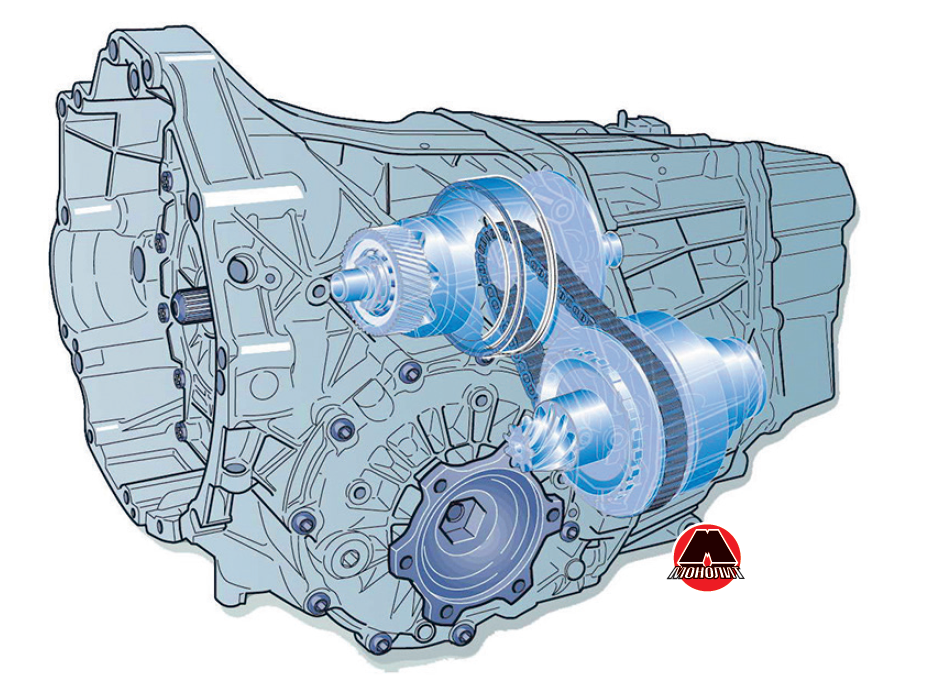5.3.11 Variator - description
In the case of the automatic transmission described above, although the gears are engaged automatically, they still shift within a given range. And what if this range is preserved, and to get rid of the gears (not in the literal sense of the word) – just make a smooth change in the gear ratio from the lowest to the highest gear. The variator is a solution of this challenge. The most widespread is a friction V-belt variator, and at present - a chain variator (an example of which is shown in Figure 5.25).
 Figure 5.25 Example of arrangement of variator automatic transmission.
Figure 5.25 Example of arrangement of variator automatic transmission.
The variator is a very simple mechanism. This is why, in fact, in recent years it has started gaining more and more popularity among automakers.
This mechanism consists of two pulleys and a belt (chain), which is stretched between them. A feature of these pulleys is that each of them consists of two halves (in terms of similar to truncated cones), which can move apart and move (as shown in Figure 5.26). One of the pulleys is a drive one (connected through a clutch to the engine crankshaft), the second is a driven one (transfers traction further to the wheels).



















2 MB